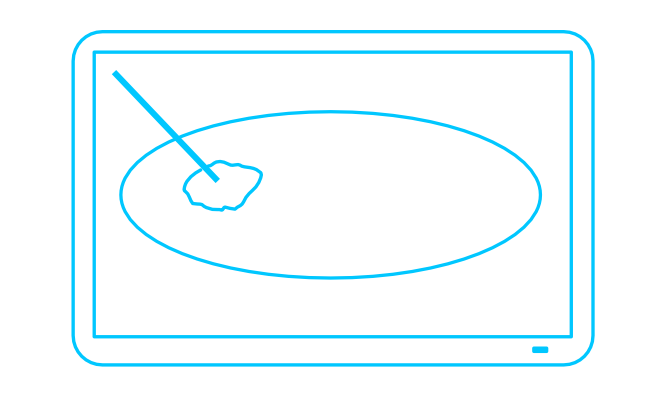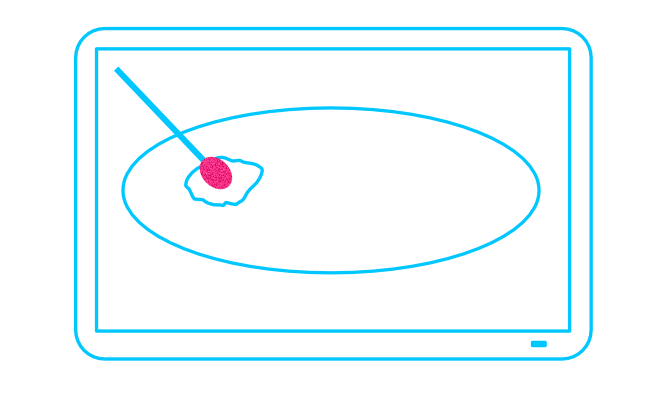Why does it matter what we do?
We provide real-time simulation technologies that are used to support physicians in better targeting tissues during a variety of minimally invasive procedure for the treatment of cancer. Use of our technology can improve significantly the chances that a tumor is completely eradicated in a single session, reduce the probability of recurrence, and simplify the work of the physician

PERCUTANEOUS ABLATION
Percutaneous ablation is a minimally invasive procedure commonly used to treat cancer. A needle-like probe is inserted into the body, the tip of the probe can either heat, freeze, or otherwise provide energy that kills a certain volume of tissue – with the goal of destroying the malignancy. The procedure does not present the side-effects of chemo and radiotherapy, and it is a one-time treatment, when the whole malignancy is successfully destroyed

THE PROBLEM
During the procedure physicians do not have a direct view of the tissues they are working on. Imaging is used to track the position of the probe. Live images show the probe and the tumor, but it is challenging to evaluate which part of the tumor has been already treated and which requires still treatment. Because of this difficulty, in 10% to 30% of procedures, a portion of the tumor is left behind untreated, leading to recurrence

OUR SOLUTION
Our GPU-accelerated libraries simulate in real-time the physics of the ablation, accounting for the actual energy delivered to the tissues and for several patient-specific factors which contribute to determine the actual ablated volume. This allows us to indicate on screen, with precision, during the procedure, which part of the tumor has been treated and which still needs treatment. As a company we have been the first world-wide to achieve real-time simulation speed for multiple ablation technologies, and the first to translated this in a clinical trial. Please visit our Technology and Clinical Trial pages for more information
